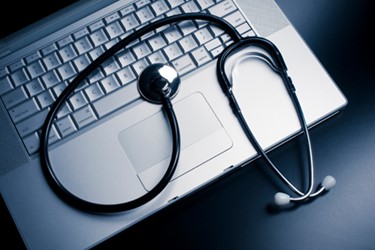The Self-Servicing Of Healthcare: Progress Or Patient Abandonment?
By C. Anthony Jones, CEO, Frontive

For most people, it’s difficult to remember when automated teller machines (ATMs) did not exist. Prior to the introduction of ATMs, every banking task required filling out a short form, waiting in line to interact with a teller and maybe even waiting for that teller to speak with a manager to sign off on your transaction. Of course, all of this assumed that you could even get to the bank in between the tight business hours that it kept.
Fast forward to today, and it’s clear to see how ATMs have revolutionized retail banking and ushered in tech-enabled self-service on a massive scale. Coupled with the near ubiquity of the internet, these devices can be found in some of the most remote locations imaginable. Aside from introducing a completely new way of banking, ATMs provided all types of businesses with a blueprint for tech-enabled self-service. The new ATM model defined what consumers would and would not tolerate in exchange for the convenience of anytime and nearly anywhere access to their money. Simply put, ATMs ‘worked’ because they delivered a clear win-win value proposition for both businesses and consumers.
Over the years, this model has been replicated across a host of consumer-facing businesses from supermarket checkout lines and fast food counters to online travel reservations for airlines and hotels (remember when booking a flight required a travel agent?). Again, tech-enabled self-service just worked because of the win-win for businesses and consumers.
But healthcare is different.
In a rush to reap the financial benefits of tech-enabled self-service, healthcare organizations have been trying to usher in more and more consumer self-service with the promise of an improvement on the ‘old way’ of doing things. At an increasing number of encounter points, healthcare professionals and customer service representatives are being replaced with online portals, check-in kiosks, chatbots and other automated technologies.
No doubt, there are numerous opportunities to streamline and improve many of the outdated, administrative bottlenecks and inefficiencies across healthcare. But that doesn’t mean that healthcare consumers will benefit from the same self-service models as other industries. Failing to recognize or acknowledge the difference between using a kiosk for patients to check in for a routine office visit vs. posting a patient’s elevated HbA1c on a patient portal with no associated conversation to provide context is irresponsible at best and bordering on malpractice at worst.
In spite of a high number of consumer-facing encounters, healthcare is not the same as banking, retail and hospitality. The failure to understand and embrace what makes healthcare unique causes so many ill-conceived and heavily forced self-service initiatives to feel like a steady march toward consumer abandonment. Among healthcare’s most noteworthy characteristics are:
- No muscle memory for consumer service. With respect to their financial transactions, healthcare organizations predominantly operate in a B2B world. As a result, they have little instinct or competency when it comes to designing consumer value propositions. Too often, their attempts at self-service are driven exclusively from the corporate need to enhance profit without identifying any meaningful value for consumers. Before rolling out a self-service option for consumers, these organizations would do well to try something novel. Ask consumers what they think before taking any action.
- Information access does not equal literacy. Providing consumers with more access to highly complex information is analogous to talking louder at someone who does not speak your language. Online sources can deliver an endless amount of useful healthcare information to consumers, but it cannot replace the years of training and judgment that physicians and nurses have that allow that information to be placed in its proper context.
- Consequences of a poor choice can be severe. Making a mistake at the supermarket self-service checkout is annoying and maybe even embarrassing, but it’s not life-threatening. Likewise, ATM transaction options are so narrow, the risks of error are incredibly small and, when they do occur, are easily corrected. Contrast that with a consumer trying to decide whether to undergo a major surgical procedure based on inconclusive test results or a situation where agreement among medical experts does not exist.
- Being sick is scary. In spite of how empowering it may seem to encourage consumers to be partners with their physicians in fighting a major illness, being sick or severely injured is one of the most frightening situations a person will ever face. In that situation, it’s not unreasonable to want to be taken care of by people who are highly trained and better equipped to anticipate and manage what may happen next.
There are ample opportunities to implement consumer self-service throughout healthcare. Ambulatory patient intake, appointment scheduling, claims management and basic education are just a few areas where self-service can improve the consumer experience and also reduce costs for healthcare organizations. Other industries have pioneered a host of self-service innovations that are convenient, cost-effective and readily embraced by consumers. Healthcare can and should copy these innovations wherever possible.
However, organizations should avoid premature deployment of self-service technologies for healthcare encounters where knowledge and experience are essential to provide context and judgment: major injury or illness; interpreting test results; informed consent; or weighing treatment options where outcome predictability is poor. It is crucial to recognize the current limitations of tech-enabled self-service, give these technologies time to mature and, until that time, resist the urge to ask consumers to fend for themselves where they are ill-equipped to do so.
